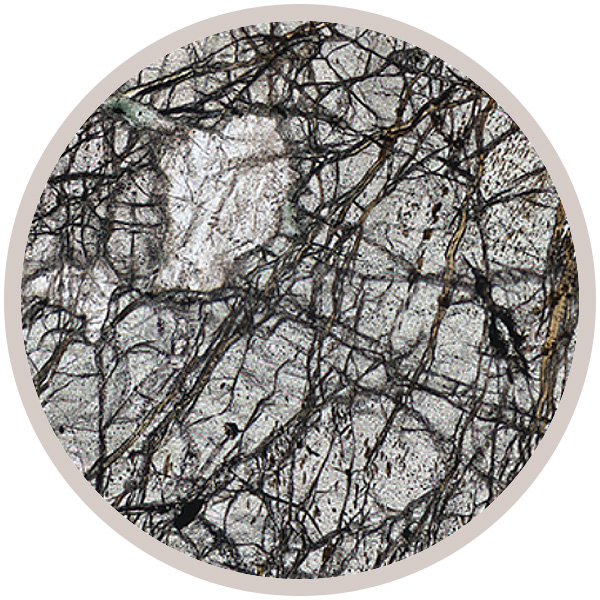
Fact sheet
This Paleogene age peridotite sample comes from the southern margin of a peridotite ring intrusion at Garbh-choire on the Isle of Skye, an area dominated by a major basic/ultrabasic central complex forming the Cuillin Hills. The intrusion, which is one of the largest of all the British Tertiary plutonic/volcanic centres, contains a range of coarse-grained igneous rock types including gabbros, dunites, peridotites and allivalites, some of which display igneous layering indicating that this is an exhumed magma chamber.
The thin section is dominated by large cracked plates of olivine with unusually high birefringence colours (the thin section may be a little more than 30 microns thick), pale green grains of pyroxene with slightly lower relief and evidence of cleavage, plagioclase feldspar apparently filling pore spaces, and opaque chromite grains.
The United Kingdom Virtual Microscope (UKVM) collection consists of igneous, sedimentary and metamorphic rocks from around the UK.
It is intended as a teaching resource, helping to tell the story of the common rock types and how they form, and reflecting the history of the UK at the margins of the continent of Europe. The collection is a series of teaching sets, for example igneous rocks from the North Atlantic Igneous Province and SW England; high-temperature metamorphic rocks from Scotland and low-temperature metamorphic rocks from Wales; and sedimentary rocks, including English limestones and sandstones.






